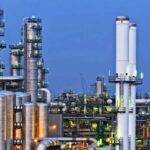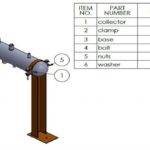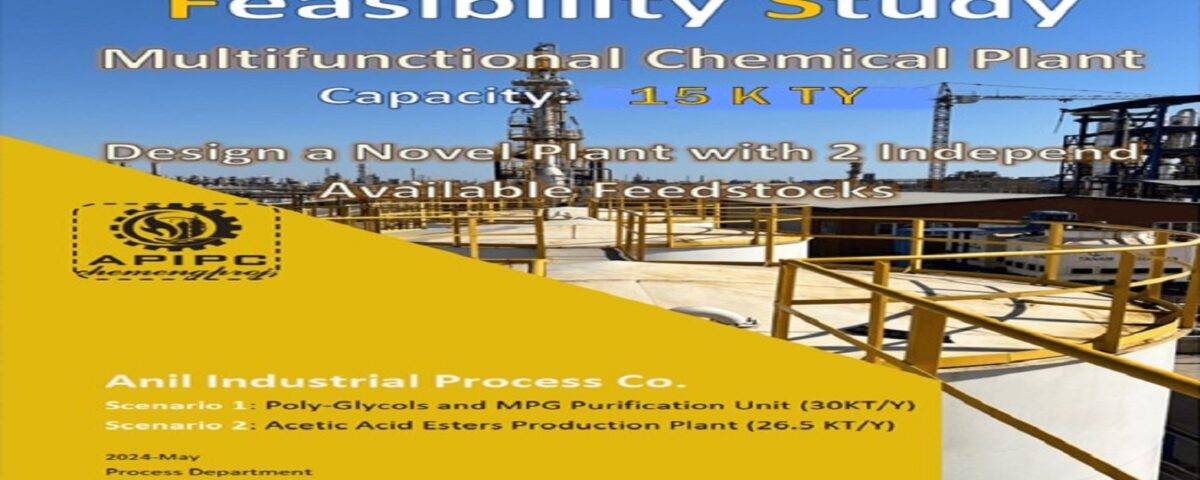Introduction
This study examines the feasibility of an ethylene glycol separation and purification unit with a capacity of 15 KTY. Two main scenarios are analyzed: the first one focuses on the separation and purification of 15,000 tons per year of poly-glycols into monoethylene glycol (MEG), diethylene glycol (DEG), and triethylene glycol (TEG), as well as the purification of 15,000 tons per year of propylene glycol. The second scenario involves establishing a chemical plant for the production and refinement of 26,500 tons per year of acetic acid esters. The project begins with an assessment of market demand and trends related to these products and proceeds to a technical analysis of the purification and production processes. Economic evaluations will include cost analysis, revenue forecasting, and investment return assessment.
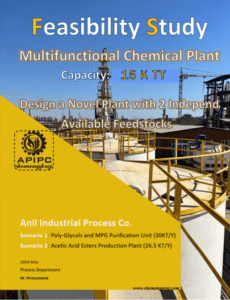
The study also addresses the environmental impacts associated with these processes and provides solutions to mitigate risks and comply with environmental standards. The results indicate a high potential for establishing multi-purpose chemical units that enhance product quality and process efficiency using advanced distillation techniques. Finally, financial results highlight an investment return within three years, with a return rate of 29.87%.
Process Description
This study explores two main scenarios for establishing multi-purpose chemical units, each with its unique characteristics and objectives. Below are the key differences between the two scenarios:
Scenario 1: Separation and Purification of Poly-glycols and Propylene Glycol
– Objective: This scenario involves the separation and purification of 15,000 tons per year of poly-glycols into monoethylene glycol (MEG), diethylene glycol (DEG), and triethylene glycol (TEG), alongside the purification of 15,000 tons per year of propylene glycol.
– Capacity: The total capacity of this unit is 30,000 tons per year.
– Processes:* It involves the use of advanced distillation techniques to achieve high purity in the final products.
– Demand: MEG and DEG have extensive applications across various industries, particularly in polyester fiber and resin production.
– Economic Analysis: The investment return for this scenario is projected to be three years with a return rate of 29.87%.
Scenario 2: Production of Acetic Acid Esters
– Objective: This scenario focuses on producing and refining 26,500 tons per year of acetic acid esters, which include MAc, Ethyl Acetate, Iso-Propyl Acetate, and Butyl Acetate.
– Capacity: The capacity of this unit is slightly lower than in the first scenario and is concentrated on ester production.
– Processes: It includes various production and refinement methods to achieve high-quality products.
– Demand: The market for acetic acid esters is growing due to their wide applications in the paint, adhesive, and chemical industries.
– Economic Analysis: Like the first scenario, economic analyses involve cost evaluation and revenue forecasting.
Comparative Results
– Product Diversity: Scenario one focuses on purifying various types of poly-glycols, while scenario two centers on producing different types of esters.
– Target Market: Scenario one concentrates on the MEG and DEG market, while scenario two targets the acetic acid ester market.
– Technical Complexity: The processes for both scenarios require advanced techniques, but the type of equipment and methods may differ.
These differences reflect the diverse needs and opportunities within the chemical industry, which can aid key investment decisions.
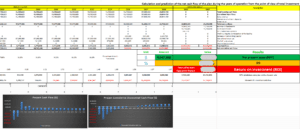
When selecting purification methods for poly-glycols and propylene glycol, several key factors must be considered:
– Type and Purity of the Final Product: The type of final product (such as MEG, DEG, TEG) and the required purity level for various applications significantly influence the choice of purification method. Each product may require specific purity standards to be accounted for in the purification process.
– Physical and Chemical Properties of Raw Materials: Attributes such as boiling point, temperature, and vapor pressure of raw materials can impact the selection of purification methods. For instance, some methods, like vacuum distillation, may be more suitable for materials with high boiling points.
– Cost and Economic Viability: Capital expenses (CAPEX) and operational expenses (OPEX) of different purification methods should be assessed. Choosing methods that are economically viable is crucial for project success.
– Process Efficiency and Yield: The yield of each purification method in recovering the final product is also highly significant. Methods offering the highest recovery rates are typically preferred.
– Environmental Impacts: Assessing the environmental footprint of different purification methods and adhering to environmental standards are essential. Using techniques with minimal environmental harm is critical.
– Required Technology and Equipment: Some methods require specialized advanced equipment that may impact costs and startup time. Thus, considering the availability of necessary technology and equipment is also crucial.
– Production Scale: The production scale (small or large) can influence the choice of purification method. Some methods may be better suited for larger scales.
These factors play a significant role in selecting the best purification methods for poly-glycols and propylene glycol and must be carefully evaluated to ensure an optimized and efficient purification process.
Market Analysis
Market analyses play a crucial role in evaluating the viability and sustainability of chemical product refinement and production projects. In this study, market analysis consists of several key stages:
Identifying and Analyzing the Target Market
Initially, the target market for the manufactured products is identified, which includes examining the current demand for monoethylene glycol (MEG), diethylene glycol (DEG), triethylene glycol (TEG), and acetic acid esters. Analysts investigate industry growth trends, consumption patterns, and specific customer needs to gain an accurate market picture.

Demand and Competition Assessment
In this phase, the market demand for each product is analyzed. Factors influencing demand, such as the growth of downstream industries (like textiles and packaging) and fluctuations in raw material prices, are assessed. The existing competition and the position of major competitors are also evaluated to identify strengths and weaknesses.
Trend Analysis and Future Outlook
Analysts examine key trends in the industry, including changes in demand, technological innovations, and environmental impacts. This section aids in forecasting future challenges and opportunities and provides decision-makers with necessary information for strategic planning.
Economic Analysis
Finally, economic analyses encompassing costs evaluations, revenue forecasting, and return on investment (ROI) are conducted. These analyses clarify the financial potential of the project, ensuring its economic feasibility.
This comprehensive process aids stakeholders in making informed decisions and selecting optimal strategies for establishing multi-purpose chemical units.
To evaluate demand and industry growth in chemical purification and production projects, various methods are employed to facilitate accurate market analysis and forecasting future trends. These methods include:
Market Analysis
– Identifying the Target Market: Identifying and analyzing the target market for produced products, including assessing the demand for monoethylene glycol (MEG), diethylene glycol (DEG), triethylene glycol (TEG), and acetic acid esters.
– Competing Analysis: Evaluating competitors and their positions in the market to identify strengths and weaknesses.
Demand Assessment
– Historical Trend Analysis: Examining historical demand data for various products to identify consumption patterns and growth trends.
– Demand Forecasting: Utilizing statistical and economic models to forecast future demand based on influencing factors such as growth in downstream industries, price changes, and economic fluctuations.
SWOT Analysis
– Strengths, Weaknesses, Opportunities, Threats Analysis: This method helps identify internal and external factors that may impact the project’s success.
Industrial Trend Analysis
– Macroeconomic Trend Analysis: Assessing the impacts of macroeconomic factors on the industry, such as changes in government policies, raw material price fluctuations, and shifts in global demand.
– Innovations and Technology Review: Analyzing technological advancements that may affect the production and purification of products.
Stakeholder Surveys and Interviews
– Collecting Information from Stakeholders: Conducting surveys and interviews with industry experts, customers, and suppliers to gather insights and forecasts about the market’s future.
Utilizing Analytical Software
– Financial Modeling with Specialized Software: Using software such as COMFAR for conducting more precise financial analyses and ROI forecasting.
These methods collectively assist in evaluating demand and industry growth, providing essential information for strategic decision-making.
Technical Analysis
In chemical purification and production projects, various methods and techniques are employed to facilitate precise process evaluation and optimization. In this study, the following methods were used for technical analysis:
Process Simulation
– Simulation Software: Employing advanced engineering software for simulating purification and production processes. These tools help analyze system behavior under different conditions and can provide accurate thermal and material balance information.
Evaluation of Purification Methods
– Reviewing Various Methods: Analyzing different purification methods, such as distillation, extraction, and filtration, to select the optimal method based on the final product type and quality requirements. This includes evaluating the effectiveness of each method in recovering and purifying products as well.
Equipment Analysis
– Measuring and Selecting Equipment: Determining the size and type of equipment needed based on simulation results and process analysis. This phase also includes estimating associated equipment and facility costs.
Process Optimization
– Optimization Strategies: Developing strategies to optimize processes for increased efficiency, reduced costs, and improved product quality. This may involve adjusting operational parameters such as temperature, pressure, and residence time.
Economic Analysis
– Cost Analysis: Reviewing capital (CAPEX) and operating (OPEX) costs associated with each purification method and evaluating ROI for each scenario.
Environmental Impact Assessment
– Environmental Impact Analysis: Conducting environmental assessments to identify risks and mitigation measures linked to purification and production processes, ensuring compliance with environmental standards.
Consultation with Experts
– Collaborating with Specialists: Engaging with experts in engineering, finance, and law to increase the accuracy and reliability of analyses.
These methods comprehensively support technical project analysis and provide necessary insights for strategic decision-making.
Separation Methods
Separation methods in purification and production projects can help reduce operational costs (OPEX) in various ways. In this study, several key methods were examined to optimize separation processes and cut costs:
Advanced Distillation Techniques
– Vacuum Distillation: This method reduces boiling points and, consequently, requires less energy for evaporation. Using vacuum distillation, higher purity levels of final products like MEG, DEG, and TEG can be achieved at lower energy costs.
Process Optimization
– Process Analysis and Simulation: By utilizing advanced simulation software, processes can be optimized for better efficiency and yield. These analyses involve examining thermal and material balance (HMB), and accurately measuring required equipment could lead to reduced capital and operational costs.
Selecting Appropriate Equipment
– Efficient Equipment Selection: By choosing suitable equipment for separation processes, maintenance and energy consumption costs can be reduced. Modern equipment tends to have higher efficiencies, positively impacting overall costs.
Raw Material Recovery
– Maximizing Recovery: Utilizing methods that enable maximum recovery of raw materials through techniques like distillation and extraction can help cut raw material procurement costs, increasing the project’s economic viability.
Waste Reduction
– Waste Management: Efficient separation methods can help minimize production waste, thereby reducing costs linked to waste management.
Economic Evaluations
– Cost-Benefit Analysis: Performing precise economic analyses to evaluate the financial impacts of each separation method on costs and revenues, assisting in better decision-making regarding method selection. These evaluations include examining initial investments, operational costs, and revenue predictions.
By implementing these methods, purification and production projects can significantly reduce operational costs while maintaining the quality of final products.
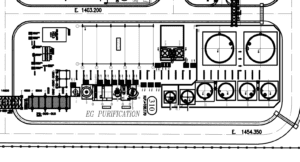
Optimization Methods
To optimize purification and production processes in chemical projects, various methods are employed that contribute to increased efficiency, cost reduction, and improved quality of final products. In this study, several key methods for process optimization are introduced:
To optimize purification and production processes in chemical projects, various key methods are introduced that contribute to increased efficiency, reduced costs, and improved quality of final products. These include the use of simulation software like COMFAR for precise behavior analysis under diverse conditions, as well as advanced separation techniques such as vacuum distillation and reactive distillation that lower energy use and enhance the purity of final products.
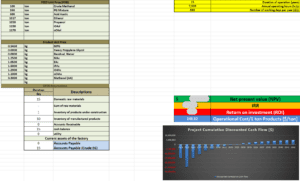
Optimizing operational parameters like temperature and pressure, choosing high-efficiency equipment, and employing new technologies are also pivotal in reducing operational costs. Moreover, maximizing raw material recovery through distillation and extraction techniques and conducting economic analyses to assess the financial impacts of methods play a crucial role in decision-making. Lastly, conducting environmental assessments aids in identifying risks and maintaining compliance with environmental standards. These methods are designed to enhance efficiency and quality in chemical projects, providing valuable insights for strategic decision-making.
Conclusion
This study reviewed the establishment of multi-purpose chemical units for the purification and production of various chemical products and analyzed two main scenarios. The first scenario pertains to the purification of 15,000 tons per year of poly-glycols and propylene glycol, while the second scenario focuses on producing 26,500 tons per year of acetic acid esters.
The findings suggest that demand for these products across various industries is steady, and the use of advanced techniques can enhance efficiency and lower costs. Investment in both scenarios is predicted to yield returns within three years, with a return rate of 29.87%. Environmental assessments indicate a commitment to adhering to environmental standards within processes. Overall, this research provides valuable information for strategic decision-making in the chemical industry and confirms the significant potential for establishing multi-purpose chemical units.
To enhance performance and productivity in the design, establishment, production of technical knowledge, innovative engineering, and optimization of glycol production and purification units in Saudi Arabia, Chemengproj Company has undertaken comprehensive simulation and optimization studies on the key processes of this unit. These studies include the following:
1. Feasibility study of the separation and purification unit of glycols with a capacity of 15 KTY.
2. Production of basic engineering documents; Operation Manual for the glycol unit.
3. Performance analysis of production and resource management at the Arta Chemical plant: evaluation of performance reports, human resources, and raw materials.
4. Establishment plan and technical knowledge for producing MEG, DEG, and TEG with a capacity of 15 KTY.
5. Design of documents, technical knowledge, and drawings for BFD, PFD, PID, and UFD of the glycol purification unit.
6. Management, control, and endorsement of engineering documents for the production unit of MEG, DEG, and TEG.
7. Simulation and optimization of the Monoethylene Glycol (MEG) purification process with a production capacity of 10 KTY.
8. Simulation and optimization of the Monoethylene Glycol (MEG) purification process with a production capacity of 15 KTY.
These initiatives aim to enhance the production of technical knowledge and innovative engineering, reduce production costs, optimize glycol production processes, and design modern units. The ultimate goal is to ensure better product quality and increase the company’s competitiveness in the market.
Feasibility Study of the Ethylene Glycol Separation and Purification Unit with a Capacity of 15 KTY
In this project, the feasibility study of the ethylene glycol separation and purification unit with a capacity of 15 KTY has been conducted.
